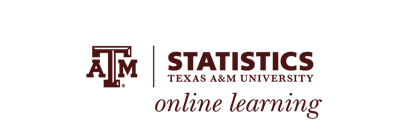For students in engineering, physical and mathematical sciences. Introduction to probability, probability distributions and statistical inference; hypotheses testing; introduction to methods of analysis such as tests of independence, regression, analysis of variance with some consideration of planned experimentation. Prerequisite: Two semesters of calculus. Multiple integration and elementary linear algebra are helpful. Credit 4.
Additonal Information
Additonal Information
Efficient uses of existing statistical computer programs (SAS, R, etc.); generation of random numbers; using and creating functions and subroutines; statistical graphics; programming of simulation studies; and data management issues. Credit 3.
Additional Information
Additional Information
Planning, execution, and analysis of sampling from finite populations; simple, stratified, multistage, and systematic sampling; ratio estimates. Prerequisite: STAT 601 or 652 or concurrent enrollment in STAT 641. Credit 3.
Additional Information
Additional Information
Multiple, curvilinear, nonlinear, robust, logistic and principal components regression analysis; regression diagnostics, transformations, analysis of covariance. Prerequisite: STAT 601 or 641. Credit 3.
Additional Information
Additional Information
Introduction to statistical time series analysis; autocorrelation and spectral characteristics of univariate, autoregressive, moving average models; identification, estimation and forecasting. Prerequisite: STAT 601 or 642 and a working knowledge of complex numbers and trigonometry. Credit 3.
Additional Information
Additional Information
Basic probability theory including distributions of random variables and their expectations. Introduction to the theory of statistical inference from the likelihood point of view including maximum likelihood estimation, confidence intervals, and likelihood ratio tests. Introduction to Bayesian methods. Prerequisite: Three semesters of calculus, including multiple integration and a basic understanding of limits. Credit 3.
Additional Information
Additional Information


See how Social we are!